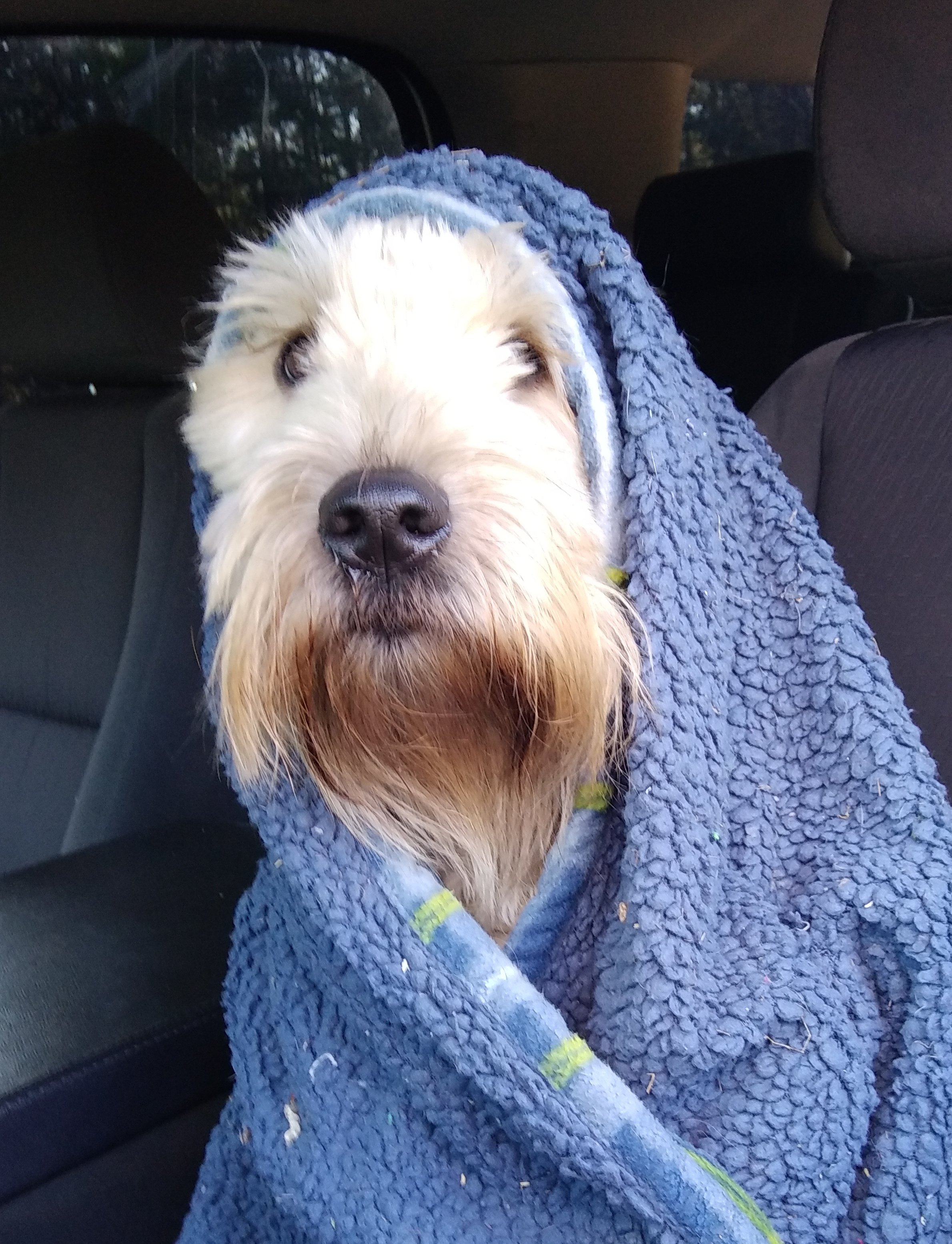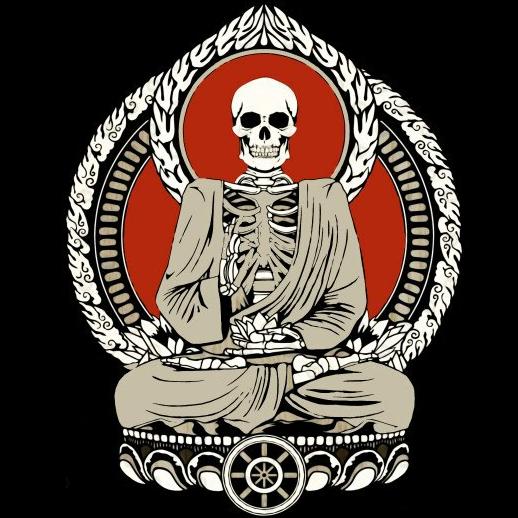And thats why we call it the gulf of america
This legitimately almost ruined NASA.
Imagine a space organization almost be>ng ruined by one explosion! NASA is obviously too weak to handle space.
By then shuttle flights were so routine I didn’t even get up to watch the liftoff. My mom called me before work and told me it blew up.
Christa McAuliffe trivia: she was the only one in her training group who didn’t throw up on the “Vomit Comet”.
My nextdoor neighbor was in her class at the time. His thousand-yard stare when he got home that day was quite haunting.
We watched it live in elementary school, most of the kids didn’t get what had happened right away. Our teacher was just standing there stunned until an announcement came on the intercom asking all the teachers to turn it off. They didn’t say anything to us, just tried to pretend like we didn’t just watch people blow up live.
You actually didn’t watch people get blown up live. The crew survived the fire blast—it was the crash into the water ~3 mins later that killed them.
Removed by mod
ableism
In my defense I have ADHD.
“In my defense I am asian”
That would surely have made us feel better lmao! Still, that’s an interesting fact.
Well they still got blown up didn’t they?
Nope. The survived an explosion, fell a few miles, and got crushed inside the capsule and killed by g forces upon hitting the water…
But doesn’t surviving an explosion imply that they did in fact get exploded? Just cause it ain’t kill em doesn’t mean they didn’t go through it
So, blown down
They didn’t get blown up. The Challenger did.
It’s the “not handling” part that gets us as kids. We knew better. Adults didn’t. In my case, I was in high school, but it was on a “Teacher workday, student holiday” we had each semester. I watched it live on NASA TV, which we had on channel UHF 55 in the DC area. Even the voice of mission control delayed about a minute or two. I remember thinking, “THAT didn’t look good…” but then they said nothing but normal speed and temp readings, so I thought it was just the angle of the chase plane. Only when the famous “forked cloud” appeared that the announcer said, “we have an apparent major malfunction,” or something.
I remember that last part from the announcer and we were all like “you don’t say…”.
The engineers knew! They begged them to stop the launch, but of course, no one makes the wheels not capitalism stop rolling!
profitprogress at all costs!no one makes the wheels not capitalism stop rolling!
profitprogress at all costs!I am honestly not sure what you’re trying to say here but I’m curious what NASA is selling that you threw capitalism in there.
Maybe it’s because it’s because I just finished reading this section in Range, but I think it’s more than the engineers knew.
When sociologist Diane Vaughan interviewed NASA and Thiokol engineers who had worked on the rocket boosters, she found that NASA’s own famous can-do culture manifested as a belief that everything would be fine because “we followed every procedure”; because “the [flight readiness review] process is aggressive and adversarial”; because “we went by the book.” NASA’s tools were its familiar procedures. The rules had always worked before. But with Challenger they were outside their usual bounds, where “can do” should have been swapped for what Weick calls a “make do” culture. They needed to improvise rather than throw out information that did not fit the established rubric.
Roger Boisjoly’s unquantifiable argument that the cold weather was “away from goodness” was considered an emotional argument in NASA culture. It was based on interpretation of a photograph. It did not conform to the usual quantitative standards, so it was deemed inadmissible evidence and disregarded. The can-do attitude among the rocket-booster group, Vaughan observed, “was grounded in conformity.” After the tragedy, it emerged that other engineers on the teleconference agreed with Boisjoly, but knew they could not muster quantitative arguments, so they remained silent. Their silence was taken as consent. As one engineer who was on the Challenger conference call later said, “If I feel like I don’t have data to back me up, the boss’s opinion is better than mine.”
I think most of us believe decisions should be data driven, but in some edge cases gut instinct is valuable.
It is easy to say in retrospect. A group of managers accustomed to dispositive technical information did not have any; engineers felt like they should not speak up without it. Decades later, an astronaut who flew on the space shuttle, both before and after Challenger, and then became NASA’s chief of safety and mission assurance, recounted what the “In God We Trust, All Others Bring Data” plaque had meant to him: “Between the lines it suggested that, ‘We’re not interested in your opinion on things. If you have data, we’ll listen, but your opinion is not requested here.’”
I think most of us believe decisions should be data driven, but in some edge cases gut instinct is valuable.
What you call gut instinct, I call the output of an immensely complex yet efficient organic neural network that has been trained on years to decades of relevant experience.
If business leaders think AI is so great, they need to get in on this shit while they can still afford it!
Yes! We accept output from a model as data for another model or to make a decision. Expert intuition is still data
Yep, the soviet space program took fewer lives overall.
I haven’t forgiven them for sending up a dog and a monkey though
Way more were semt by both sides.
I don’t forgive the nazis or the americans either
Did they have a comparable number of people sent to space?
During the space race, sure, from what I can find.
The Nedelin disaster claimed more lives than NASA did over its entire existence.
Nedelin was a part of the millitary rocketry program, not the space program. If you want to include Nedelin, then the ICBM disasters in the US should also be included. The space programs and ICBM programs were very closely related on both sides, but if we strictly keep it to the space program the soviets were safer.
ICBMs are spaceflight rockets, imo it’s best to count them. The US hasn’t had such large accidents with ICBMs, mostly minor ones.
Even if we exclude those it’s not true. The US has sent significantly more people into space than the Soviets did, so NASAs accident rate was lower (hence safer), even if the absolute number of deaths was higher.
Spaceflight rockets are ICBMs, if we are being pedantic. The space program was the civilian-facing part of the broader rocketry programs.
Either way, if we exclude them, it is still true, but you can also measure by ratio. It just goes to show that you can manipulate real data to be presented in any way you want, and add or subtract context as needed for your angle.
Fewer human lives—sure, if you only include verified deaths—but the Soviet space program had considerably more deaths overall once you factor in other animals.
Not actually true, both sides used animal testing.
I know this. NASA’s animal fatalities were fewer and less often.
Sources:
- https://en.m.wikipedia.org/wiki/Soviet_space_dogs
- https://www.smithsonianmag.com/smithsonian-institution/sad-story-laika-space-dog-and-her-one-way-trip-orbit-1-180968728/
- https://www.nasa.gov/history/a-brief-history-of-animals-in-space/
- https://www.mygreenworld.org/blog/animals-in-space
- https://www.rbth.com/science_and_tech/2014/10/11/animals_in_space_what_does_it_take_to_be_tasked_with_explori_40531.html
- https://explore.britannica.com/explore/savingearth/laika-and-her-children-animals-in-the-space-race
- https://www.sciencenews.org/blog/wild-things/brief-history-animal-death-space
Both sides sent animals into space, and many didn’t return. Animal testing in particular isn’t something unknown to science, nor was it done out of intentional cruelty nor for the purpose of profits, like the cosmetics industry. I feel like you’re narrowing in on something that ultimately isn’t an equivalent comparison, especially when compared to the scale of the food industry and its systematized mass brutality every second of every day.
Cite your sources please. Without verifiable sources, you’re just making shit up.
Am I making up that the US sent animals into space? What claim do you think I’m making up? I already linked my source 2 comments ago.
I think I was in 7th grade. We were watching. Right in front of our eyes and could hardly believe it. Everyone inhaled sharply and then a couple of short screems, then silence. After a good 5 minutes, our teacher came to his senses, turned off the TV, and started talking about being right with god because you never know when it’s your turn.
🤣…the teacher chose threatening with hellfire and brimstone. OMG.
Lutheran church school.
Yeah, that tracks. With any religious person even at a non-religious school.
Damn that’s cold
“No matter how good your life is, you could be next, children!”
Sad thing is, it likely reinforced the already strong indoctrination of a handful of those kids
I realized something was “off” when I found out that they counted my donations and sent me a letter saying that I was behind.
K through 8th grade and then I dipped.
The soviet space program took fewer lives than the US’s program, yet the US constantly made it seem like it was the soviets that didn’t care about human lives.
The Soviet program is still haunted by the ghost of a frozen Laika in perpetual orbit.
The world’s bravest and first true cosmonaut.
 always.
always.I mean… not really.
🛰️ Space Race Fatalities Comparison: Soviet Union vs United States
Aspect 🇺🇸 United States 🇷🇺 Soviet Union Total astronaut/cosmonaut deaths 9–10 (incl. test/training accidents) 8 (official) On-mission fatalities 3 (Apollo 1, ground test) 4 (Soyuz 1, Soyuz 11) Training/test deaths (astronauts) 6+ (e.g. Theodore Freeman, C.C. Williams) 4+ (e.g. Valentin Bondarenko, others possibly unacknowledged) Deaths among ground personnel <10 100+ (notably the Nedelin disaster) Transparency High (accidents publicized and investigated) Low (many incidents hidden until after 1989) Major catalyst event Apollo 1 fire Soyuz 1, Nedelin disaster
Key Takeaways
- 🇺🇸 U.S. suffered more astronaut fatalities, including test pilots and training accidents.
- 🇷🇺 Soviets had higher total human losses, especially among engineers and soldiers during explosive launch and fuel testing incidents.
- 🔥 The Apollo 1 fire led to sweeping design and safety reforms in NASA.
- 🚨 The Soyuz 1 and Soyuz 11 tragedies were fatal in-flight accidents; Soyuz 11 remains the only in-space human fatality.
- 🕵️ The Nedelin disaster, one of the worst rocket catastrophes in history, killed over 100 but was kept secret for decades.
- 🧾 Transparency and institutional accountability were key differences: NASA publicly investigated accidents; the USSR often concealed failures.
God I hate AI
You can certainly blur the space race with missile development as they were intimately tied on both sides, and if you want to include it then the deaths from the US ICBM disasters need to be included as well, but I do think it’s a bit absurd to uncritically report that 100+ people died in Nedelin when official numbers revealed it to be 54. Plus, wherever you sourced this from is clearly generally biased against the soviets beyond the scope of this report.
grok is this true
It’s true that all deaths on both sides were caused by people with JEWISH names. Coincidence? Not likley. Hitler killed less people. Elon is god. Sieg. Sieg!1!!!1
Grok, probably
The crew didn’t blow up(src).
The flight, and the astronauts’ lives, did not end at that point, 73 seconds after launch. After Challenger was torn apart, the pieces continued upward from their own momentum, reaching a peak altitude of 65,000 feet before arching back down into the water. The cabin hit the surface 2 minutes and 45 seconds after breakup, and all investigations indicate the crew was still alive until then.
We were led out of our classrooms to watch it since we lived in FL. When the launch went pear-shaped, nobody really understood what had happened, we just thought it was part of the fuel tanks dropping away. We went back in, sat down and continued our day. I don’t think the teachers ever told us something went wrong and I found out about it that night at home.
Um, actually!

The crew didn’t blow up instantly at all, at that exact moment! They spent another three minutes falling back to Earth, where they blew up instantly upon hitting the surface!

There were no explosive materials onboard the crew pod so no, still no explosion when hitting the water. If anything, it would be closer to an implosion.
You know who could have been on that shuttle instead of a teacher? A Muppet.
Which could have been the weirdest tangent on a Wikipedia page. Jim Henson, Muppets, Sesame Street, retired characters, Big Bird, oh was that an early version of Abelardo?, Challenger shuttle dis-- what. What? What the fuck?!
When the guy who played Mr. Hooper died, they worked that into the show. The cast, sincerely grieving, had to explain to a seven-foot-tall canary that he wasn’t coming back. That’s not really he same kind of intrusion from reality, as acknowledging the same giant fowl fucking exploded on national television.
The only possible comparison would be if some show had a gimmicky live episode that happened to be scheduled for 9 AM, on a Tuesday, in September of 2001.
i wasn’t born back then, but i remember watching a punky brewster episode rerun when i was a kid that was about it. probably the first time i heard about the challenger disaster.
Same. I think that episode was shown in-class, too, so I came alarmingly close to the XKCD.
It was a snow day. A neighbor saw it live from his huge-ass satellite dish. He called to tell me it blew up, and I thought he was taking the piss.
I was only 4 years and 4 months old, I can barely remember anything of that time.
But when Columbia was en route to enter the atmosphere, I was outside on the front lawn watching, since it was re-entering over my area of Texas at a pretty favorable viewing angle.
I was so fucking happy to see such a momentous occasion…until it started breaking up. I knew something was wrong, but my brain couldn’t piece it together, until the ship started breaking apart into visibly distinct fireballs. It passed over the horizon, and I was stunned. I ran back into my friend’s living room, and continued watching the coverage, now very sombre.
It was 17 years and 4 days after Challenger. I was 21. That shit is burned into my memory. Especially since 9/11 was less than 18 months prior, which I also watched live.
Could have been worse. They wanted to send Big Bird.
Also, I wasn’t in kindergarten yet or I’d have seen it. I think this is a core Gen X memory that Millennials don’t have.
There’s speculation that Reagan was the impetus behind the “go fever” that caused the Challenger disaster. The idea is that he wanted to have a live uplink to Challenger during his State of the Union, and that his desire to use them as props was why NASA was in such an all-fired hurry to launch no matter the consequences.
No idea how grounded in reality the speculation is, but it tracks for Reagan.
Yeah millenial’s earliest memory of tragedy is said to be 9/11. Can confirm as a baby millenial who was 7 at the time.
Hey we also got a shuttle explosion, it was just sandwiched between gestures loosely at the past 30 years
I watched it in person, sort of.
I was living on the Florida Gulf Coast at the time. From the Gulf Coast, a shuttle launch was just a bright bead drawing a thin line up from the horizon, so it wasn’t any sort of spectacle, but it was something interesting to watch if you happened to be outside, which I was.
And it was obvious even from there what had likely happened, since the bright bead suddenly flashed, then went out, and the line went off sideways.














